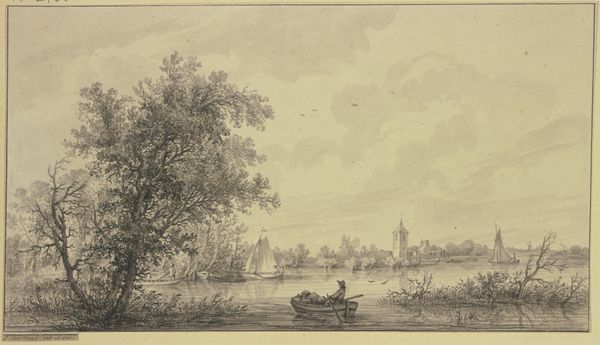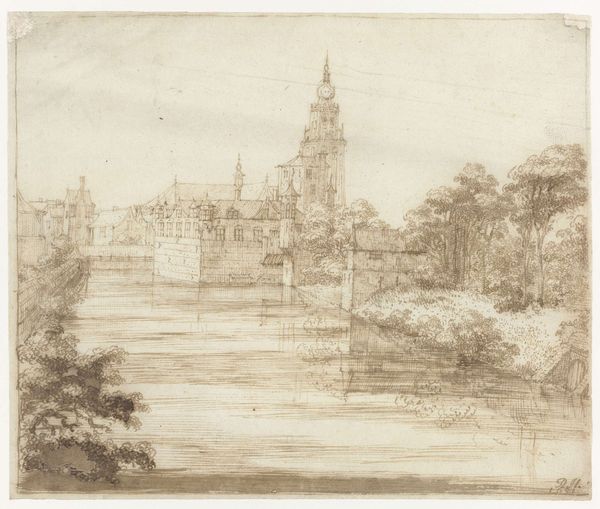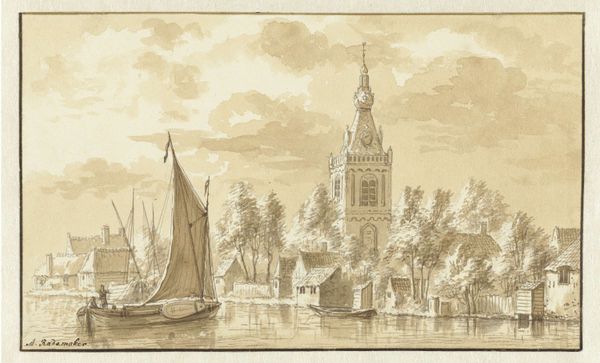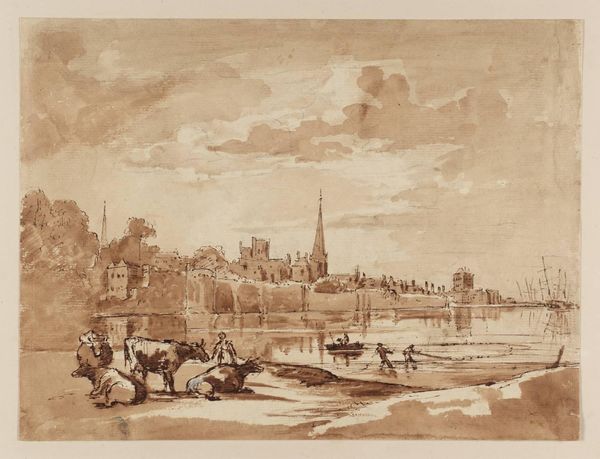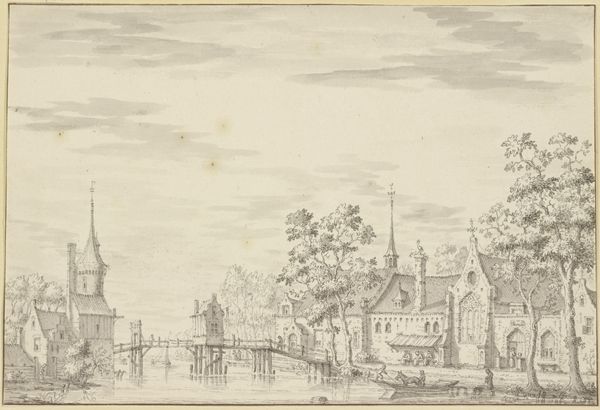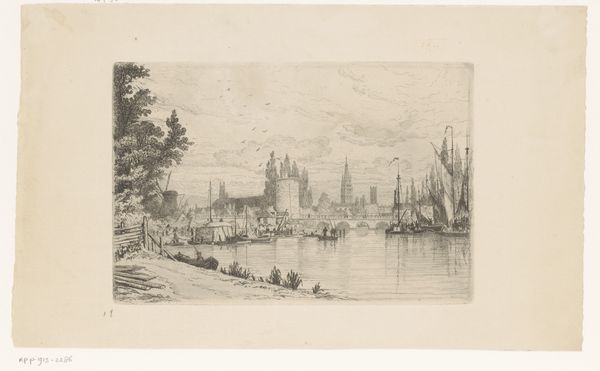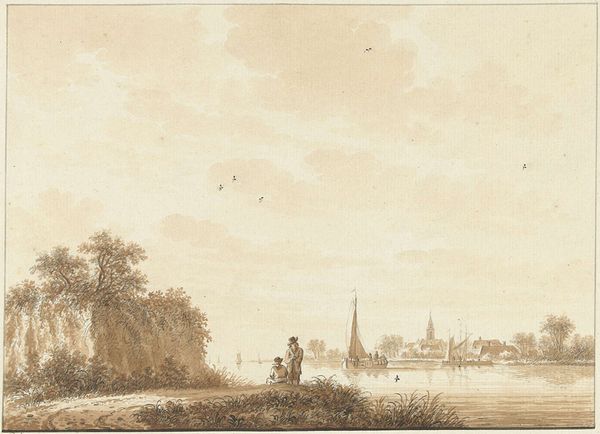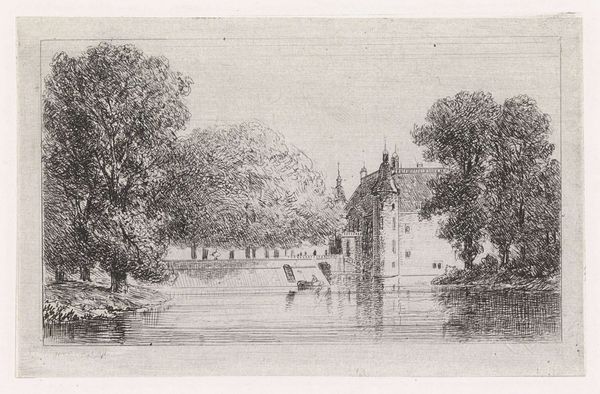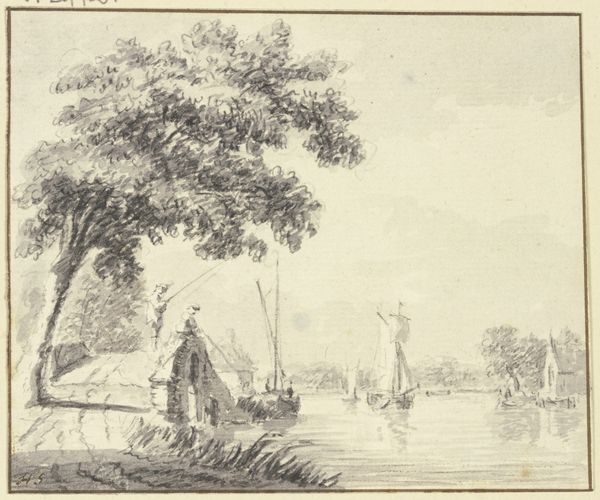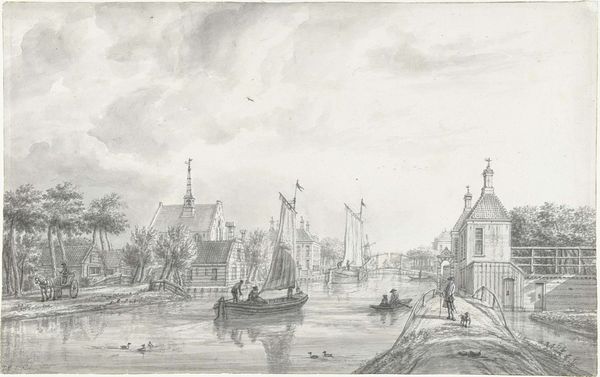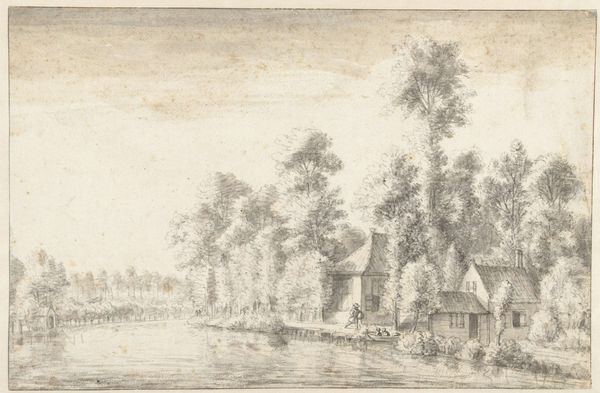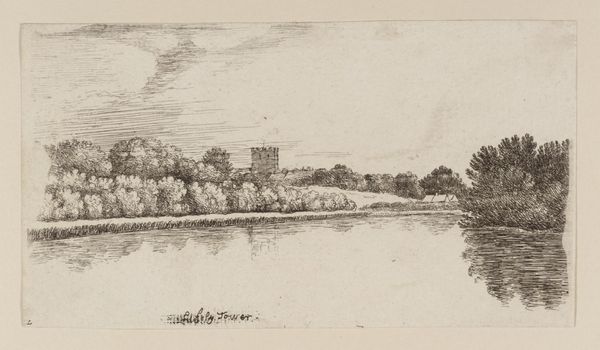
drawing, paper, ink
#
drawing
#
baroque
#
landscape
#
paper
#
ink
#
cityscape
Dimensions: height 200 mm, width 316 mm
Copyright: Rijks Museum: Open Domain
Curator: Editor: Here we have Anthonie Waterloo's "Huis Kronenburg en Loenen aan de Vecht," likely made between 1619 and 1690 using ink on paper. The tones are muted, creating a serene, almost melancholic feeling. What strikes me most is the clear separation between the imposing Kronenburg and the town of Loenen. What's your perspective on this drawing? Curator: This separation is critical, isn't it? The drawing offers us not just a landscape, but a layered social commentary. Notice how Kronenburg, though physically present, is relegated to the periphery, almost swallowed by nature. It makes you wonder, doesn't it, about the shifting power dynamics between the landed gentry and the rising merchant class during the Dutch Golden Age. Do you feel the artist is romanticizing or critiquing this power structure? Editor: I hadn't considered it in terms of power dynamics! I initially just saw the landscape and the tranquil river. The boat seems almost like a mediator between the two distinct areas. I wonder if the individuals in the boat symbolize something about mobility during that era. Is it a romantic view of landscape with everyday figures included to represent life at the time? Curator: Exactly! The seemingly simple act of crossing the river becomes a charged action, a symbolic negotiation of class and status. Who has access to this mobility? Who controls the river's resources? Waterloo is placing these questions subtly into the scene. How do you see this artwork contributing to the wider history and representation of Dutch identity at the time? Editor: This makes me rethink the entire composition. It isn’t just a landscape, it is a record of shifting cultural status. Considering these sociopolitical nuances offers a much deeper understanding and enriches the work significantly. Curator: Indeed, this drawing invites us to reflect on the power of art to document, question, and perhaps even subtly challenge prevailing societal structures, it reminds us to look closely at what may seem to be simple depictions and always ask, “who benefits?”
Comments
No comments
Be the first to comment and join the conversation on the ultimate creative platform.
